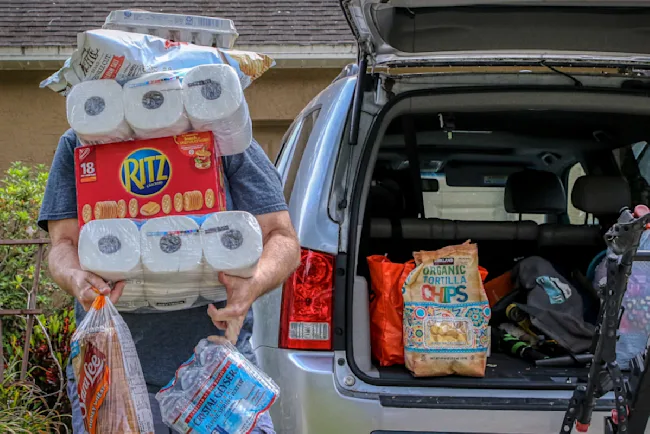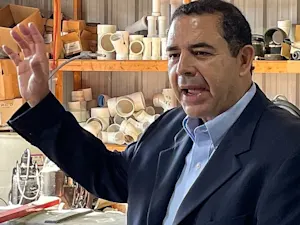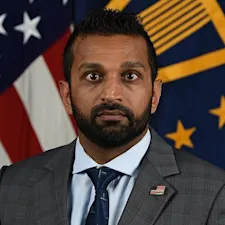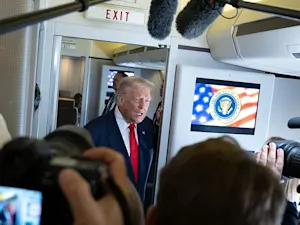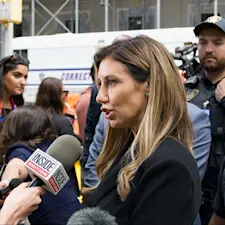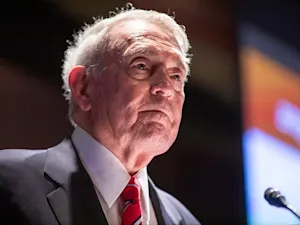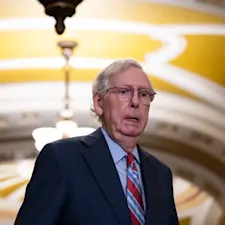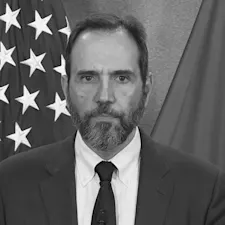
Shutdown 2025: What Happens to Air Travel and Services
U.S. Capitol at dusk as seen from the eastern side, 2013. Photo by Martin Falbisoner under CC BY-SA 3.0.
When the federal government shut down on Oct. 1, 2025, the nation faced a patchwork of services still running and others coming to a halt. Hundreds of thousands of federal workers were furloughed, some agencies closed, and essential programs continued — often with employees working unpaid. Drawing on reporting from Politico, the Associated Press, the BBC, and other outlets, this guide breaks down what continues, what pauses, and what risks long-term disruption if the shutdown persists.
Essential Programs Keep the Wheels Turning
Social Security, Medicare and Medicaid stay operational because they are funded through mandatory spending, not appropriations. Checks for beneficiaries continue to arrive, health-care providers are reimbursed, and veterans' services such as clinics and burial services keep going. Some VA services like the GI Bill Hotline and career counseling are closed until funding resumes.
The US Postal Service (UPS), funded through its own revenues, remains open. Mail delivery and post offices operate as usual, providing a rare constant during the shutdown.
Air Travel and Border Security: Essential but Unpaid
Air traffic controllers and Transportation Security Administration (TSA) agents are categorized as essential and continue working. However, they are working without pay until the shutdown ends. The Federal Aviation Administration (FAA) maintains its training and academy programs, but about a quarter of its staff have been furloughed. Border staff, including ICE agents, are also on duty, many of whom are unpaid.
National Parks: Open but Limited
The National Park Service is furloughing approximately 64% of staff. Most parks remain open for visitors, with roads, trails and open-air memorials accessible. Visitor centers and restrooms are mostly closed, and parks may shut if visitor activities threaten safety or resources. This approach is similar to the 2018-2019 shutdown, which saw parks open but suffer vandalism and environmental damage due to reduced staff.
Health Agencies Facing Deep Cuts
The Department of Health and Human Services (HHS) is furloughing about 41% of its workforce. The Centers for Disease Control and Prevention (CDC) is reducing staff by more than two-thirds, and the National Institute of Health (NIH) is furloughing three-quarters of its employees, pausing most research and enrollment in clinical trials. Patient care for those already enrolled continues.
The Food and Drug Administration (FDA) is operating with 86% of its staff, handling recalls but delaying new drug and device submissions. Food safety inspections are disrupted, with a ripple effect across the food system. According to Politico, former FDA Deputy Commissioner Frank Yiannas warned of a ripple throughout the food system affecting inspections, testing and industry consultations.
Education Department: Many Functions Paused
Most Education Department staff are furloughed. Student loan bills, Pell Grants and early Free Application for Federal Student Aid (FAFSA) processing continue temporarily. However, functions like civil rights complaint handling and new grant awards are paused.
Regulators: Mixed Activity
Some agencies are mostly shuttered. The Federal Trade Commission (FTC) plans to furlough all but commissioners and a few essential staff, suspending consumer complaint operations. The Securities and Exchange Commission (SEC) and Commodity Futures Trading Commission (CFTC) operate with minimal staff, halting enforcement and rule-making. The Consumer Financial Protection Bureau (CFPB) remains active due to its independent funding.
Military Operations Continue
More than a million active-duty troops work without pay. Many civilian defense workers are furloughed but deemed essential stay on duty. The Pentagon cannot award new contracts or start programs. Overseas bases and missions, including the operation supporting Ukraine, remain active. Elective surgeries in military facilities are postponed.
Energy and Environment: Selective Work
The Interior Department furloughs two-thirds of National Park Service staff but keeps permitting work on oil, gas and coal projects going. The Bureau of Land Management (BLM) remains active on fossil fuel issues. Environmental Protection Agency (EPA) inspections and regulatory work are slowed, delaying climate rules and permits. EPA chief Lee Zeldin has reportedly resisted further staff cuts during the shutdown.
Food Assistance: Funding at Risk
Food aid programs face shortages. The contingency fund for the Special Supplemental Nutrition Program for Women, Infants, and Children (WIC) is expected to last about a week, and some states may use their own funds, but many could have to turn recipients away if the shutdown persists. The Supplemental Nutrition Assistance Program (SNAP) continues but also risks running out of funds.
Cybersecurity and Trade
The Cybersecurity and Infrastructure Security Agency (CISA) is furloughing more than half its staff, leaving fewer than 900 employees exempt, after earlier departures due to budget cuts. The Office of the United States Trade Representative (USTR) and Customs and Border Protection (CBP) continue to operate, funded outside congressional appropriations. The Department of Commerce (DOC) keeps about one-fifth of its staff on duty, supporting trade enforcement and export controls.
The Real Impact
Around 750,000 federal workers face unpaid furloughs, often under threat of long-term job cuts if the shutdown drags on. Contractors and dependent businesses gain no back pay. The Office of Management and Budget (OMB) has prepared for possible mass firings — an unusual move indicating long-term impact. President Donald Trump has used the shutdown to pressure Congress, warning that irreversible cuts could follow if funding remains stalled. The partial continuity of certain services allows leadership to claim "the government is still working," even as many agencies struggle with staffing and operations.
What You Need to Know
Travel disruptions are possible. Air traffic controllers and TSA agents work unpaid, and delays could increase. Most national parks stay open for now but with limited services. Health programs like Medicare and Medicaid continue, though research at CDC and NIH is limited. Student aid is unaffected for now, but many agency functions are paused. Food programs face shortages that could limit assistance for millions.
The plan's duration will determine the severity of the disruption. While short-term impacts are manageable, prolonged shutdowns may deepen economic and social effects, eroding public confidence and critical services. Experts estimate a governmentwide shutdown would reduce economic growth by about 0.15 percentage points per week, with private-sector effects increasing that to 0.2 percentage points weekly.
The government remains a patchwork of activity and inactivity, reflecting priorities and funding choices that will shape daily life until the impasse is resolved. The shutdown is ongoing, and the ultimate impact depends heavily on how long the funding stalemate lasts.
References: Government shutdown 2025: A guide to what's still open, what's closed and what's fuzzy | How the government shutdown will affect Americans | What happens now that a government shutdown is underway | US consumer watchdog, largely shuttered, to continue work during shutdown, email says | How much does a US government shutdown cost the economy?



